It is a tale they narrate, saying the Titan
Prometheus stole fire from the Gods and gave it to men, bringing them warmth
and light, and Zeus punished him for his presumption, chaining him to Mount
Caucasus and sending each day an eagle to peck out Prometheus’s liver, only for
it to grow back overnight, ready to be eaten again the following day. In time,
Zeus relented and freed Prometheus, but in order to fulfil his vow that the
Titan would forever be tied to the mountain, he forced Prometheus to wear an iron
ring, into which was set a fragment of stone taken from Caucasus, on his finger
forevermore. Thus, decorated rings came into the world.
 |
| Prometheus Pecked |
Out of the realm of
myth, the earliest rings were simple ornaments amongst ancient peoples, often
just simple bands of metal, but sometimes decorated, either directly into the
metal or with inlaid stones. In Ancient Egypt, it was common practice to seal
personal possessions with an inscribed seal-stone, and a convenient method of
keeping the seal readily available was to drill a hole through it, pass a wire
through the hole and twist it around a finger. Over time, these developed into
the familiar signet ring; the modern ‘wedding ring’ was originally a seal-ring,
given by a husband to his new wife, so that she might seal her stores of
provisions and food with his mark.
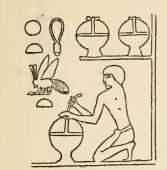 |
| Ancient Egyptian sealing a pot |
In Egypt, doors were secured with a cord,
and a seal attached, so that it was immediately apparent if the door had been
opened by any unauthorised person; over time, as locks were developed, a key
served a similar purpose, and although key-rings were once used, these were
unwieldy and separate keys for separate locks became the norm.
 |
| Egyptian seals and rings |
Alongside signet
rings, rings inscribed with a variety of messages were made. The French
antiquarian, the Comte de Caylus, in his masterwork, (1752-5),
includes an illustration of a Greek ring bearing the inscription KIPIA KAΛH, ‘Beautiful
Ciria’, and another of a triple ring inscribed ZHCAIC, ‘Mayest thou live.’
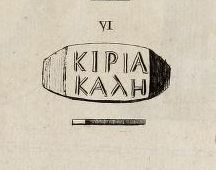 |
| Caylus - Greek KIPIA KAΛH ring |
Caylus writes that this type of ring was extremely popular with the Greeks and
Romans, and all manner of messages were included on them. Later, in early
nineteenth century France, a different kind of message ring emerged, it is said
from the workshop of Jean-Baptiste Mellerio, jeweller to Marie Antoinette and
the Empress Josephine. Mellerio set his rings with precious and semi-precious
stones, the initial letters of their names spelling out an acrostic word or
message.
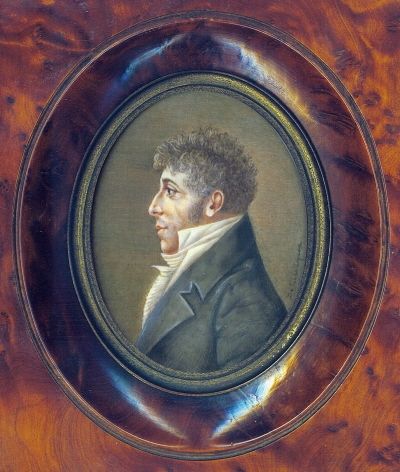 |
| Jean-Baptiste Mellerio |
Thus, if he set a ring with a jacinth, an amethyst, a diamond, an
opal, a ruby and an emerald, the first letters of these stones spell out
J’ADORE – ‘I love you’. Although the name of your sweetheart might be
picked out in this manner, by far the most popular messages were Souvenir
and Amitié (Remembrance and Friendship); let’s face it,
some amours do not last as long as a precious stone and having to have a
ring reset can be pricey.
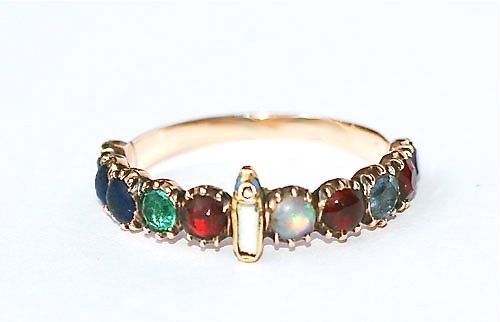 |
| Elle Vous Va - It Fits You (think Cinderella - if it fits, you're the one!) |
Although England was then at war with France, the
fashion spread over the Channel, and acrostic jewellery became very popular,
sometimes retaining words or messages in French, sometimes in English. The most
popular words were REGARD (Ruby, Emerald, Garnet, Amethyst, Ruby and Diamond)
and DEAREST (Diamond, Emerald, Amethyst, Ruby, Emerald, Sapphire and Topaz).
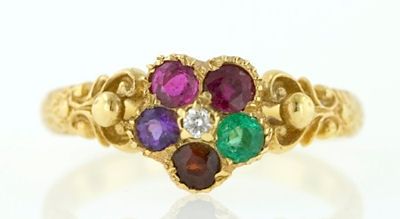 |
| REGARD ring |
This fashion grew throughout the Regency period, reached a peak during
Victoria’s reign and continued well into the twentieth century; in 1863, the
Prince of Wales (later Edward VII), presented his bride to be, Princess
Alexandria, with a ring set with a beryl, an emerald, a ruby, a turquoise, a
jacinth and another emerald, thus spelling the name by which he was most
commonly known – Bertie – (the jacinth was used for the ‘i’, as i’s and
j’s are classically interchangeable). This devotional sort of jewellery was
fine if you had fallen for an Anne, a Beth or a Colin, but if your beloved was
a Catherine, a Bartholomew or an Alexandrina, you would have to use a little
imagination. Bracelet, brooches, necklaces were obvious solutions, but lockets
or snuff boxes could also be set with the correct stones to spell out a longer
name.
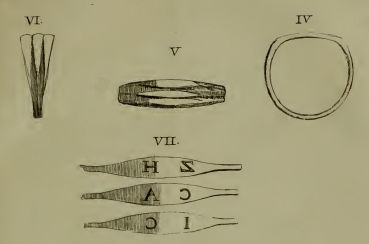 |
| Caylus - Greek ZHCAIC ring |
In addition to messages of love and devotion, political acrostics were
also employed, to surreptitiously indicate one’s espousal to a cause or
faction. Wearing a ring set with a ruby, an emerald, a pearl, an emerald, an
amethyst and a lapis lazuli, showed that a person was a supporter of the repeal
of the Corn Laws.
If you’d like to try it out for yourself, here is a
list of possible stones that you could use
- there is no definitive list, and in keeping with the origin of the
practice, names are given in French.
A. Amethiste. Aigue-marine.B. Brilliant cut Diamond.C. Chrisolithe. Carnaline. Chrisophrase.D. Diamant.E. Emeraude.F. No StoneG. Grenat.H. Hiacinthe.I. Iris.J. Jasper.K. No Stone.L. Lapis lazuli.M. Malachite.N. Natralithe.O. Onix. Opale.P. Perle. Peridot. Purpurine.Q. No StoneR. Rubis. Rose diamant.S. Saphir. Sardoine.T. Turquoise. Topaze.U. Uraine.V. Vermeille (especially yellow garnet)X. Xepherine.Y. Z. No Stones.
 |
| Anne of Cleves - with a thumb and two finger rings |
As ‘k’ and ‘w’ are not used in French (apart from in
loan and regional words), and because some letters have no stones, English
jewellers might substitute a coloured stone for a missing gem, with the initial
letter of the colour standing in for the name of a precious stone. This makes
for difficulties in interpreting the meaning on some pieces of jewellery, the
meaning of which may only have been known to the jeweller and the owner of a
piece. Bear in mind too that stones have different names in different languages
– Emerald/Emeraude is fine for the letter ‘e’ in English and French, but
it is called Smaragd in German, so would stand instead for an ‘s’.
No comments:
Post a Comment